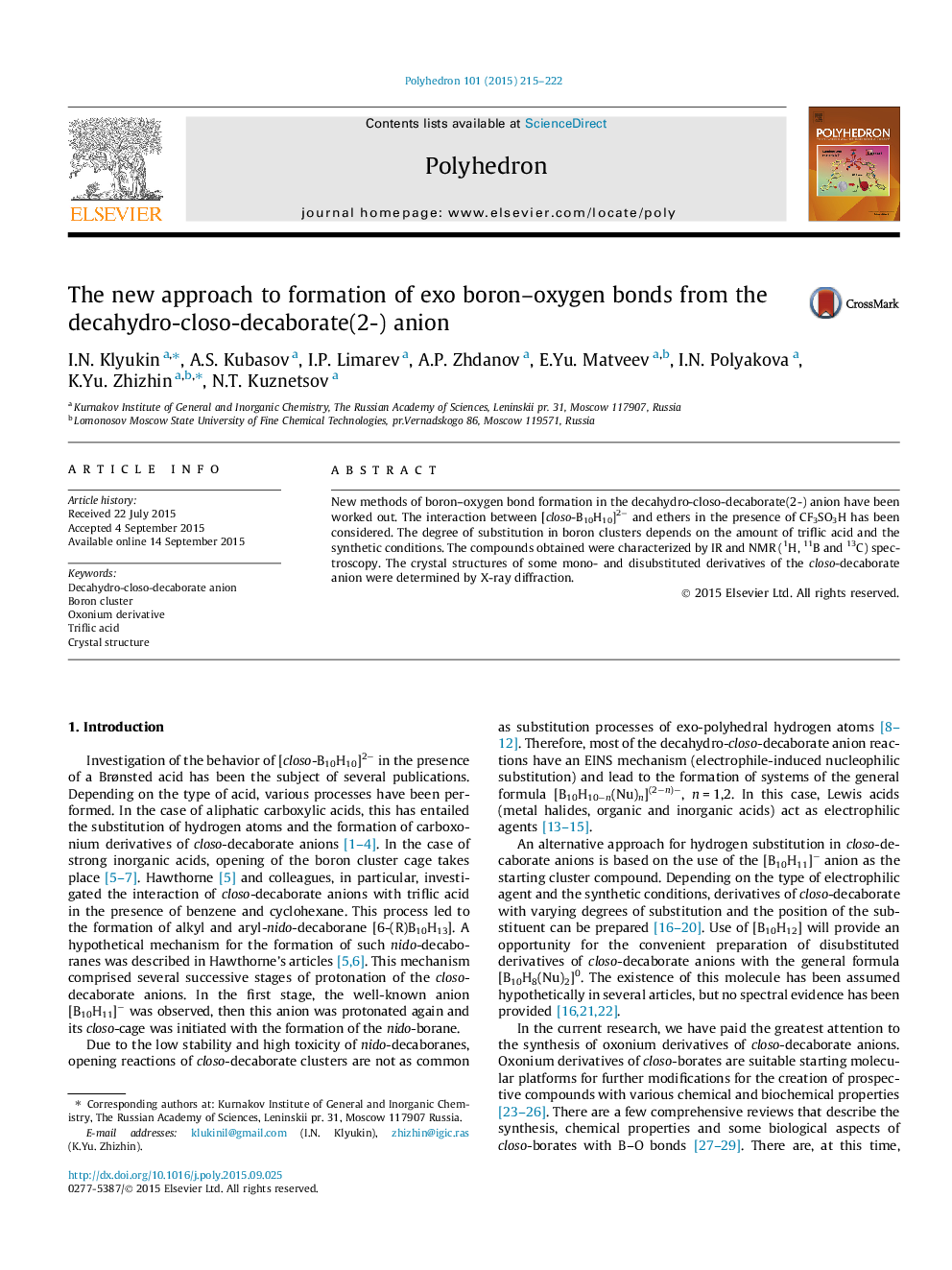| Article ID | Journal | Published Year | Pages | File Type |
|---|---|---|---|---|
| 1336837 | Polyhedron | 2015 | 8 Pages |
New methods of boron–oxygen bond formation in the decahydro-closo-decaborate(2-) anion have been worked out. The interaction between [closo-B10H10]2− and ethers in the presence of CF3SO3H has been considered. The degree of substitution in boron clusters depends on the amount of triflic acid and the synthetic conditions. The compounds obtained were characterized by IR and NMR (1H, 11B and 13C) spectroscopy. The crystal structures of some mono- and disubstituted derivatives of the closo-decaborate anion were determined by X-ray diffraction.
Graphical abstractNew methods of boron–oxygen bond formation in the decahydro-closo-decaborate anion(2-) have been discovered. The interaction between [closo-B10H10]2− and ethers in the presence of the CF3SO3H has been considered.Figure optionsDownload full-size imageDownload as PowerPoint slide
